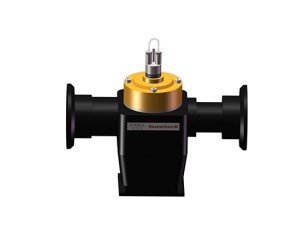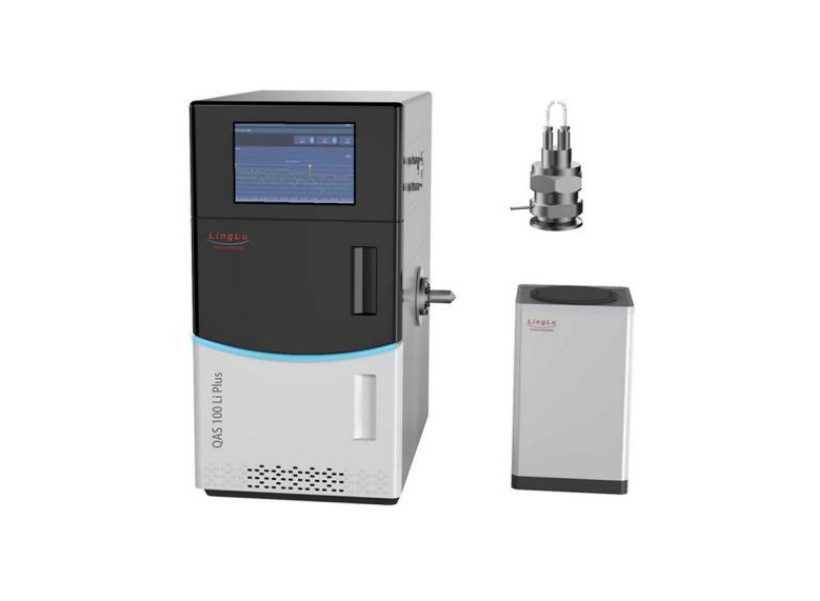
In-situ Electrochemical Mass Spectrometer (Battery DEMS)
Introduction to Differential Electrochemical Mass Spectrometry (DEMS)
Mass spectrometry is a powerful instrument for identifying substance compositions and can be used for gas analysis. Its advantages lie in its ability to analyze a wide range of substances, from the smallest hydrogen molecules to large organic vapors with molecular weights in the hundreds. It is a versatile gas analyzer with low detection limits, high sensitivity, wide linear range, and minimal gas consumption. Additionally, it allows for isotope labeling and finds broad applications in gas analysis for various types of batteries.
In-situ electrochemical mass spectrometry, also known as online electrochemical mass spectrometry, differential electrochemical mass spectrometry (DEMS), or online electrochemical mass spectrometry (OLEMS), is particularly useful for in-situ gas analysis during the charge and discharge processes of energy storage devices such as lithium-ion batteries. For gas-consuming battery types, like air batteries, it enables quantitative analysis of gas consumption. This technique provides real-time insights into the gas generation or consumption during different stages of battery operation, allowing for the determination of gas distribution patterns as voltage varies. As such, it is an essential analytical tool for investigating battery electrochemical reaction mechanisms, rapidly screening electrode materials, and evaluating electrolyte decomposition, among other crucial applications.
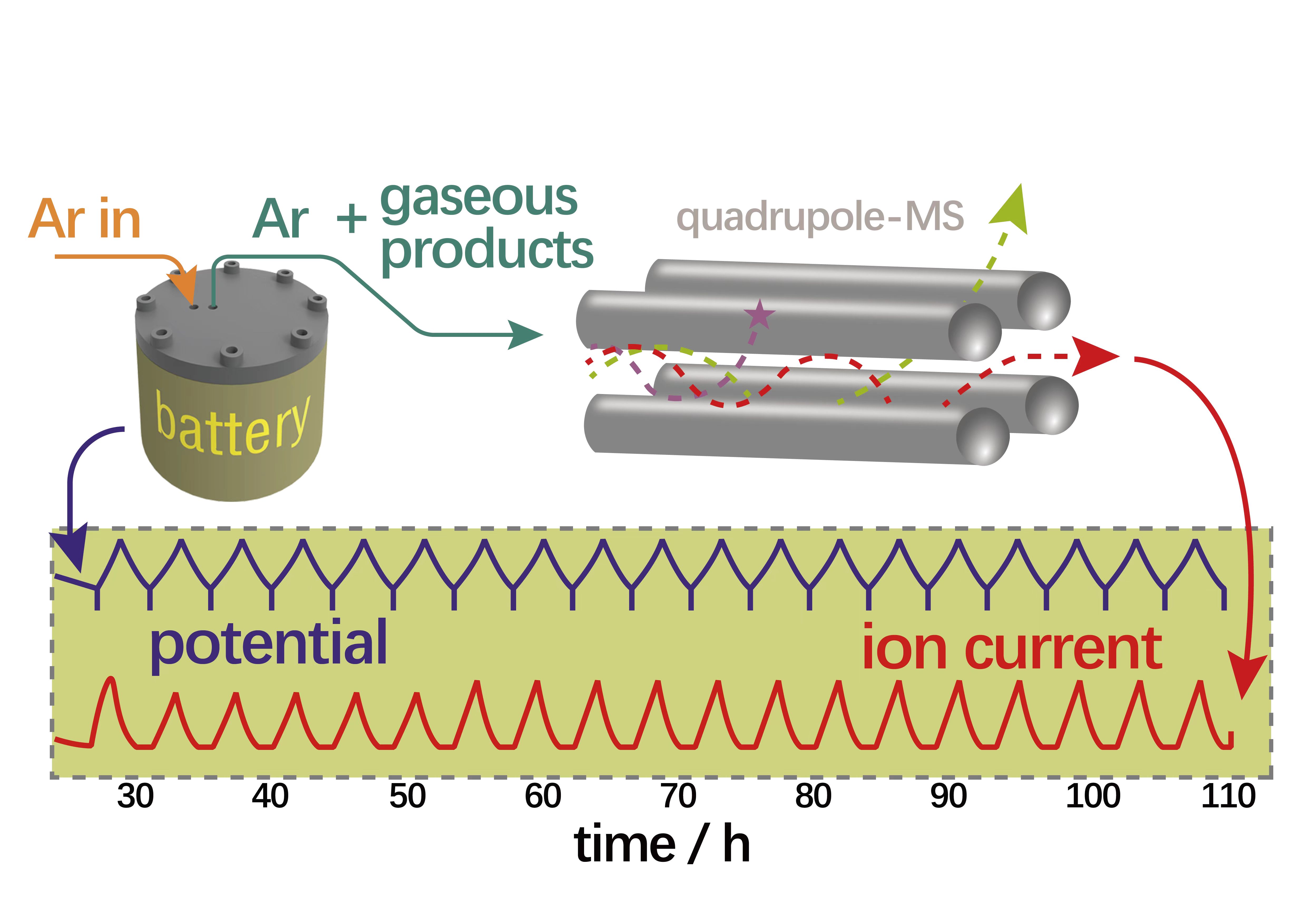
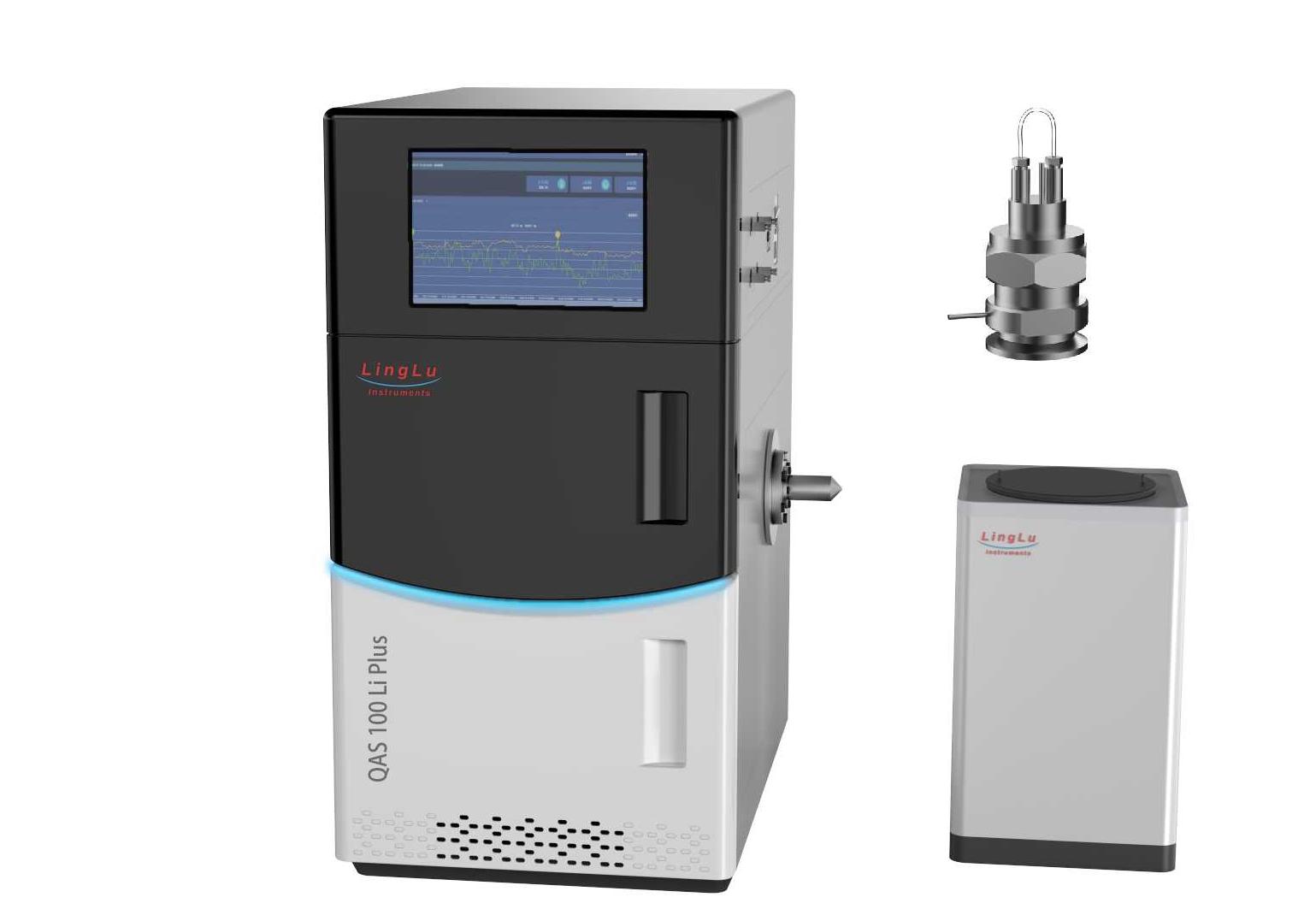
QAS 100 Li Plus

QAS 100 Li
Application Introduction:
1. Quantitative detection of O2 and CO2 evolution during initial charging of lithium-rich cathode materials.
2. Quantitative detection of O2 and CO2 evolution during initial charging of high-voltage lithium cobalt oxide.
3. Quantitative detection of O2 and CO2 evolution during initial charging of ternary cathode materials.
4. Quantitative detection of O2 and CO2 evolution during initial charging of high-nickel cathode materials.
5. Quantitative detection of O2 and CO2 evolution during initial charging of sodium-ion battery cathode materials.
6. Quantitative detection of O2 and CO2 evolution during initial charging of anode materials.
7. Investigation of gas generation from electrolyte decomposition in batteries.
8. Detection of O2 and H2 evolution during charging and discharging processes of aqueous zinc-ion batteries.
9. Quantitative detection of O2 consumption during Li-O2 battery discharge and O2 evolution during charging.
10. Quantitative detection of CO2 consumption during Li-CO2 battery discharge and CO2 evolution during charging.
Customer application case:
1. Quantitative detection of O2 and CO2 evolution during initial charging of lithium-rich cathode materials.
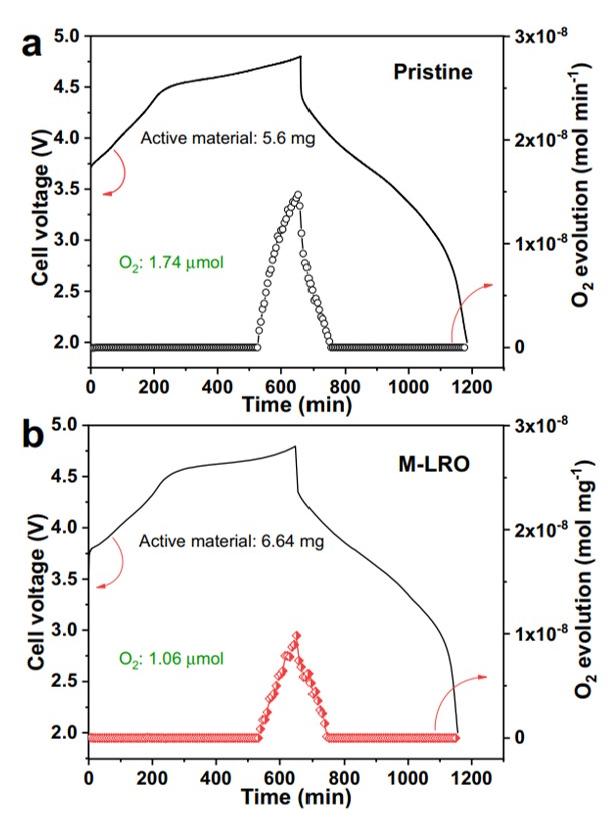
Nat. Comm. 2022, 13,1123
2. Quantitative detection of O2 and CO2 evolution during initial charging of high-voltage lithium cobalt oxide.

Angew. Chem. 2021, 133, 27308 – 27318
3. Quantitative detection of O2 and CO2 evolution during initial charging of high-nickel cathode materials.
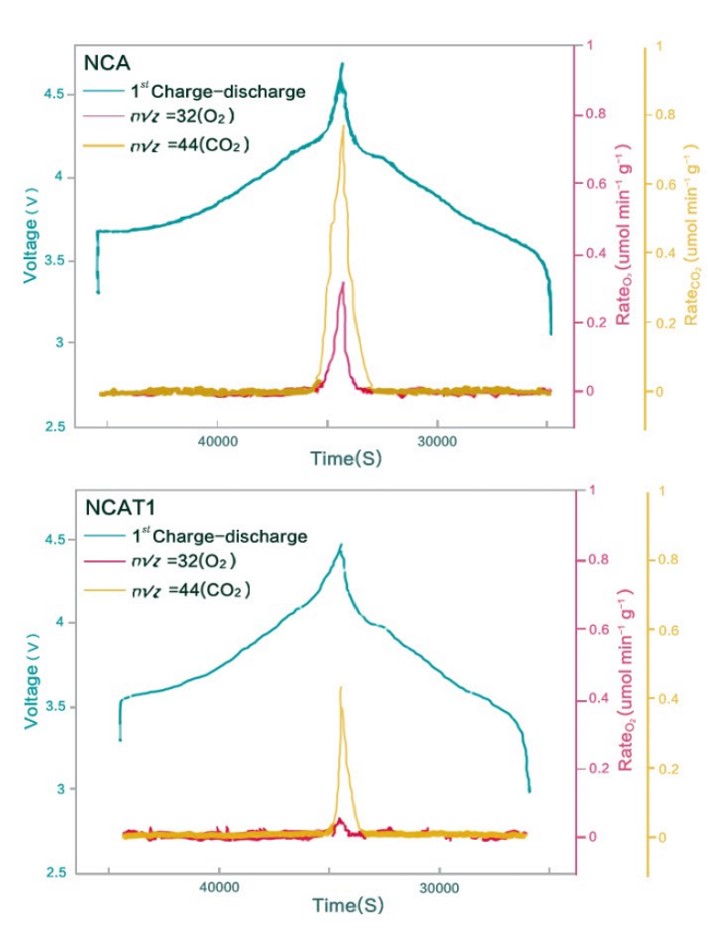
Small 2021, 2104282
4. Quantitative detection of O2 and CO2 evolution during initial charging of sodium-ion battery cathode materials.

Nat. Comm. (2021) 12:5267
5. Detection of gas evolution during anode material discharge
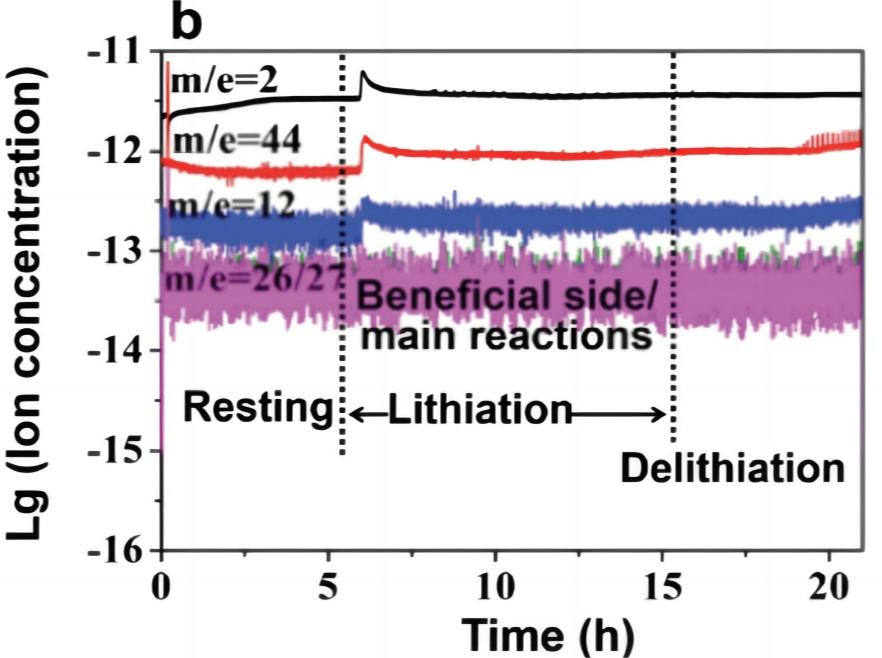
Energy Environ. Sci., 2019, 12, 2991--3000
6 .Detection of gas evolution from Lithium-ion battery electrolyte decomposition.

Journal of The Electrochemical Society, 162 (10) A1984-A1989 (2015)
7. Zinc-ion batteries.

Joule 2022, 6, 399-417
8. O2 Detection during Li-O2 battery charging and discharging process.

ACS Appl. Mater. Interfaces, 2021,13,4062-4071
9. CO2 gas detection during Li-CO2 battery charging and discharging process.
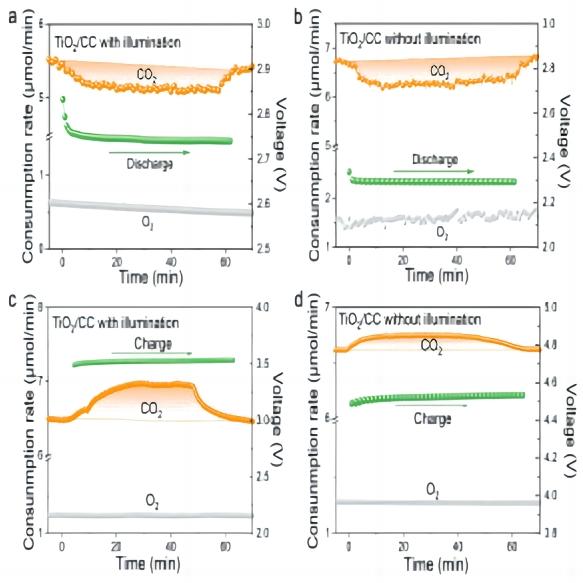
Small 2021, 17, 2100642
Partial List of Published Papers by Clients:
Angew. Chem. Int. Ed. 2019, 58, 2345-2349
Energy Environ. Sci. 2019, 12, 2991-3000
Adv. Funct. Mater. 2022, 32, 2105029
Advanced Materials. 2022, 34, 2104792
Angew. Chem. Int. Ed. 2022, 61, e202114293
Angew. Chem. Int. Ed. 2021, 133, 26177-26184
Angew. Chem. Int. Ed. 2021, 133, 16540 -16544
Energy Environ. Sci. 2021, 14, 883-889
Adv. Funct. Mater. 2020, 30, 2002223
Adv. Energy Mater. 2020, 10, 1904262.
Adv. Funct. Mater. 2020, 2001619
Nat. Commun. 2020, 11, 1576
Angew. Chem. Int. Ed. 2020, 59, 7778-7782
Angew. Chem. Int. Ed. 2017, 56, 9126-9130
Angew. Chem. Int. Ed. 2017, 56, 7505-7509
ACS Appl. Mater. Interfaces. 2019, 11, 23207-23212
Chem.Comm. 2019, 55, 10092-10095
Energy Storage Materials. 2020, 26, 593-603
i science. 2019, 14, 312-322
ACS Catal. 2019, 9, 3773-3782
ACS Appl. Mater.Interfaces .2019, 11, 15656-15661
ACS Appl. Mater. Interfaces .2019, 11, 45674-45682
Energy Storage Materials. 2019, 20, 307-314
J. Mater. Chem. A. 2019, 7, 23046-23054
Journal of Catalysis. 2020, 384, 199-207
Electrochimica Acta. 2022, 419, 140424
ACS Cent.Sci. 2020, 6, 232-240
J. Mater. Chem. A. 2020, 8, 7733-7745
J. Mater. Chem. A. 2020, 8, 259-267
ACS Appl. Mater. Interfaces. 2016, 8, 31638-31645
Journal of Power Sources. 2020, 451, 227738
Small. 2019, 15, 1803246
Energy Storage Materials .2020, 30, 59-66
Adv. Sci. 2021, 8, 2100488
Adv. Funct. Mater. 2022, 32, 2108153
Energy Storage Materials. 2021, 43, 391-401
Cell Reports Physical Science. 2021, 2, 100583
Chemical Communications. 2021, 57, 8937-8940
Energy Storage Materials. 2021, 42, 618-627
ACS Nano. 2021, 15, 9841–9850
ACS Nano. 2022, 16, 1523–1532
Adv. Funct. Mater. 2022, 2112501
Adv. Energy Mater. 2022, 12, 2103667
Electrochimica Acta. 2022, 415,140216
ACS Appl. Mater. Interfaces. 2022, 14, 18561-18569
Adv. Energy Mater. 2022, 2103910
Joule. 2022, 6, 399–417
Small. 2021, 2104282
Angew. Chem. 2021, 133, 27308-27318
Adv. Funct. Mater. 2022, 2202679
ACS Appl. Energy Mater. 2020, 3, 12423-12432
Nat Commun. 2022, 13, 1123
Nat Commun. 2021, 12, 3071
ACS Appl. Mater. Interfaces. 2022, 14, 5308−5317
ACS Appl. Mater. Interfaces. 2021, 13, 360−369
Nat. Commun. 2021, 12, 5267
Nat. Commun. 2020, 11, 5519
Angew. Chem. Int. Ed. 2020, 59, 23061−23066
ACS Nano. 2021, 15, 8407−8417
Adv. Sci. 2022, 2104841
J. Am. Chem. Soc. 2022, 144, 3106-3116
Adv. Funct. Mater. 2022, 2113235
Journal of Energy Chemistry. 2022, 64, 511-519
Energy Environ. Sci. 2020, 13, 2540-2548
J. Mater. Chem. A. 2020, 8, 22754-22762
Adv. Energy Mater. 2021, 11, 2003263
ACS Appl. Mater.Interfaces. 2021, 13, 12159-12168
ACS Central Science 2021, 7, 175-182
ACS Appl. Mater.Interfaces. 2021, 13, 4062-4071
Journal of Power Sources. 2021, 495, 229782
Energy Storage Materials. 2021, 38, 130-140
Chem. Mater. 2020, 32, 9404-9414
Energy Storage Materials. 2021, 39, 60-69
Adv. Funct. Mater. 2021, 31, 2101423
Applied Surface Science. 2021, 565, 150612
Adv. Funct. Mater. 2021, 31, 2104011
Chemical Engineering Journal. 2021, 426, 131101
Energy Storage Materials. 2021, 41, 475-484
Journal of Materials Chemistry A. 2021, 9, 19922-19931
Small. 2021, 17, 2100642




